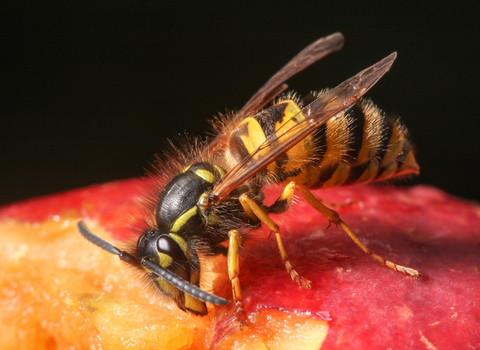
Common Wasp ©Mike Snelle
Common wasp
Wasps are well-known, and unfortunately not very well-loved! But give these black and yellow guys a chance, as they are important pollinators and pest controllers.
Scientific name
Vespula vulgarisWhen to see
April to OctoberSpecies information
Category
Statistics
Length: up to 2cmCommon.
